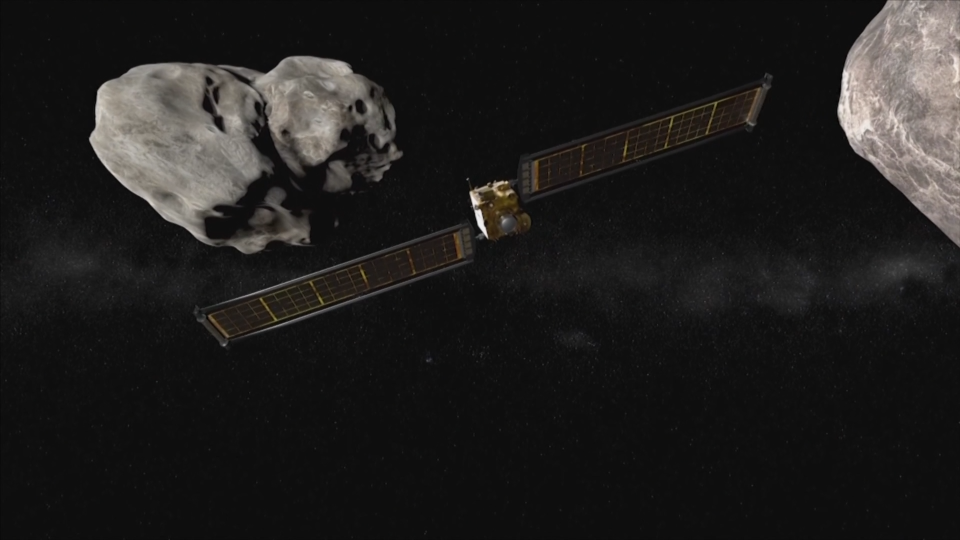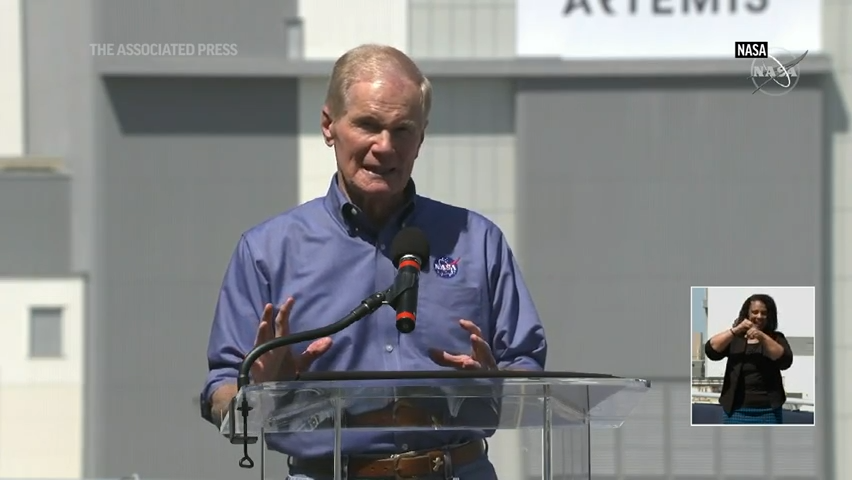Defending Earth takes the whole planet: Why NASA crashed into an asteroid – on purpose
On Sept. 26, NASA crashed an uncrewed, refrigerator-size spacecraft into an asteroid. And we did it on purpose.
This is not a movie plot. After 10 months flying in space, NASA’s Double Asteroid Redirection Test (DART) – the world’s first planetary defense technology demonstration – successfully moved asteroid Dimorphos’ path in space after hitting it at more than 14,000 miles per hour.
To be clear, this asteroid was and is not a threat to Earth. So why did we do this? To see if we could deflect an Earth-threatening asteroid, should one ever be discovered.
Good news: We can. On Tuesday, NASA scientists confirmed calculations that this first-of-its-kind mission changed the trajectory of its target asteroid, marking a watershed moment for planetary defense.
How do we know? The Didymos asteroid system has been studied for years, and the orbit of Dimorphos around its larger parent Didymos before DART’s intentional collision was accurately measured to take 11 hours and 55 minutes. After DART’s impact, the new time it takes Dimorphos to orbit around Didymos is 11 hours and 23 minutes with an estimate of two minutes uncertainty.
In other words, this spacecraft’s impact altered Dimorphos’ orbit around Didymos by 32 minutes.
'Space is the place': NASA administrator touts Artemis I as key to our future on Mars

An important priority: defending Earth
NASA knows Americans believe planetary defense should be a priority for our agency. According to Pew Research survey, 91% of Americans said monitoring asteroids and other objects that could potentially collide with the Earth should be an important priority for NASA.
Now we know we can aim a spacecraft with the speed and precision needed to impact even a small body in space if it ever posed a threat. A small change in its speed or trajectory is all we need to make a significant difference in the path of an asteroid.
DART’s success provides a significant addition to the essential toolbox NASA and humanity should have to protect Earth from a devastating impact by an asteroid. This mission required incredible preparation and precision to make impact with an asteroid almost 7 million miles away. NASA exceeded expectations on all counts.
Opinion alerts: Get columns from your favorite columnists + expert analysis on top issues, delivered straight to your device through the USA TODAY app. Don't have the app? Download it for free from your app store.
The James Webb Space Telescope with the Hubble Space Telescope were fixated on asteroid Didymos to give us a view into the impact. Both groundbreaking telescopes were focused for the first time on the same target at the same time.
We will accelerate finding potentially hazardous asteroids with launch of our next Planetary Defense mission, the Near-Earth Object (NEO) Surveyor, which will enable a possible DART successor to provide what we need to save the day should we ever need it.
What James Webb telescope images tell us: How the James Webb telescope helps us get a clearer picture of Jupiter – and our universe
Defending the planet takes the whole planet
Planetary defense is an international endeavor. For example, the Italian Space Agency provided the Light Italian CubeSat for Imaging of Asteroids satellite, which deployed 15 days before DART’s impact, to capture images of DART’s collision and the resulting cloud of ejected matter. The images being returned by LICIACube are helping researchers better characterize the effectiveness of kinetic impact in deflecting an asteroid.
Additionally, in four years, the European Space Agency’s Hera project will conduct detailed surveys of both Dimorphos and Didymos, with a particular focus on the crater left by DART’s collision and a measurement of Dimorphos’ mass to precisely determine the changes caused by the mission.

Defending our planet is a globally unifying endeavor. Science benefits humanity. We are all crew members on spaceship Earth, and it’s our job to protect and improve life on our home planet. It’s the only one we have.
We are trying to help defend the planet. Hopefully, NASA will be ready for whatever the universe throws at us.
Bill Nelson serves as the 14th NASA administrator.
You can read diverse opinions from our Board of Contributors and other writers on the Opinion front page, on Twitter @usatodayopinion and in our daily Opinion newsletter. To respond to a column, submit a comment to letters@usatoday.com.
This article originally appeared on USA TODAY: NASA asteroid crash: The DART mission worked. What it means for future

